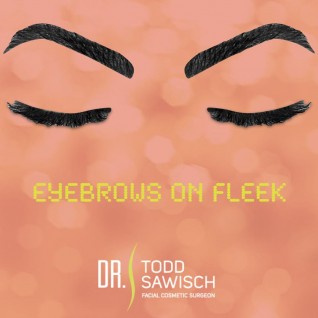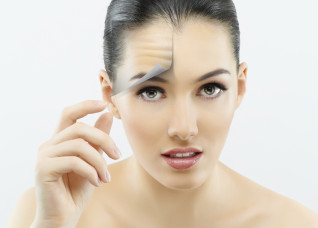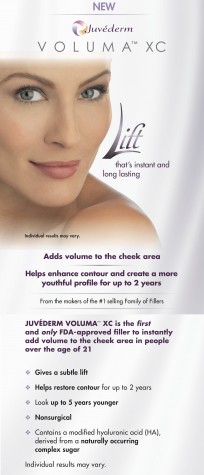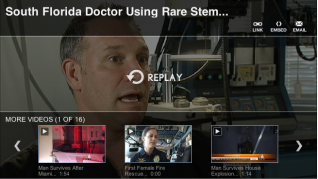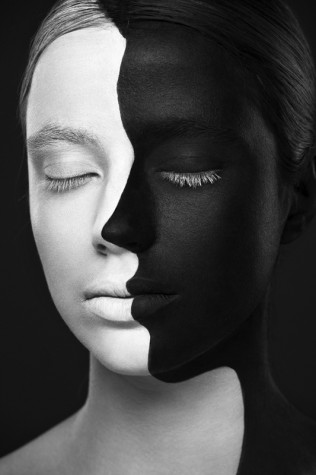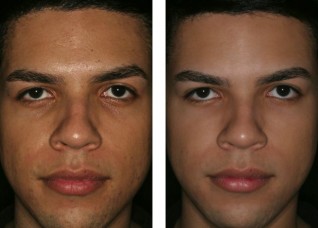Botox and Wrinkles: Biomechanical Evidence
A new study offers insight on how injections of onabotulinum toxin A may affect skin elasticity and pliability.
The researchers — James P. Bonaparte, M.D., of the Department of Otolaryngology-Head and Neck Surgery, University of Ottawa, and David Ellis, M.D., of the Division of Facial Plastic Surgery at the University of Toronto — undertook a prospective cohort study on the mechanism of action of botulinum type A on certain skin properties. “Understanding the natural course that onabotulinum toxin A has on the elasticity of skin may help physicians understand why there appears to be a progressive reduction in wrinkle levels with repeated treatments,” they write.
To determine whether onabotulinum toxin A increases skin pliability and elasticity with a corresponding decrease in the contribution of the viscoelastic component of skin resistance, Drs. Bonaparte and Ellis enrolled 48 onabotulinum toxin A-naïve women, with a mean age of 55 years, from October 1, 2012, through June 31, 2013. The participants, 43 of whom completed the study, had a minimum of mild wrinkle levels at the glabella and lateral orbit. Glabellas, supraorbits and lateral orbits were treated with onabotulinum toxin A and assessed at baseline, two weeks, two months, three months and four months post-injection.
For all three areas — the supraorbit, the glabella and the lateral orbit — there was a significant effect of time on pliability, elastic recoil and the ratio of viscoelastic to elastic distension (Uv/Ue ratio).
“This study provides further evidence that there is an alteration in biomechanical properties of the skin after injection with onabotulinum toxin A,” the authors write. “This effect appears to last up to four months in the glabella and up to three months at other sites. The decrease in the Uv/Ue ratio suggests onabotulinum toxin A injection does not result in an increase in tissue edema suggestive of an inflammatory reaction within the skin. However, it remains unclear whether this is due to an intrinsic property of the medication or another, unrecognized mechanism.”
Botox Injections Relieve Symptoms Of The Blues: Can Depression Disappear With A Shot?
May 22, 2015 04:29 PM By
Source: Parsaik A, Mascarenhas SS, Hashmi A, et al. Role of Botulinum Toxin in Depression: A Systemic Review and Meta-Analysis. APA Annual Meeting. 2015.
Celebrate Mother’s Day with a Gift of Beauty!
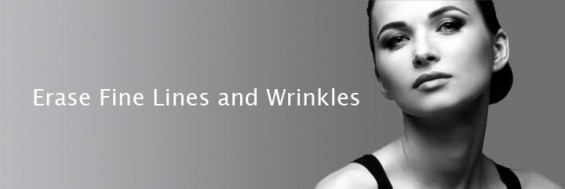
Now through May 23rd, 2014 purchase one tube of Restylane or Perlane and receive $100 off, purchase 2 tubes and receive $300 off.
Call Today 954-772-2000
Offering the best injectables to Miami, Boca Raton & Ft. Lauderdale residents
Juvederm Voluma XC is here!
Lose your Lines & Love your Lashes!
NBC 6- South Florida Doctor Using Rare Stem Cell Technique
Please click on the below link to view the NBC 6 interview with Dr. Sawisch in regard to using a rare stem cell technique. You do not want to miss this!
https://www.nbcmiami.com/news/South-Florida-Doctor-Using-Rare-Stem-Cell-Technique-232991131.html
Botox, Juvederm & Latisse Specials!
ONE DAY ONLY SPECIALS on Botox, Juvederm & Latisse!
Tuesday, October 1, 2013
Call today to reserve your time- appointments are required.
Treatment and payment must be rendered at appointment on October 1st, 2013.
THE PATIENT AND ANY OTHER PERSON RESPONSIBLE FOR PAYMENT HAS A RIGHT TO REFUSE TO PAY, CANCEL PAYMENT, OR BE REIMBURSED FOR PAYMENT FOR ANY OTHER SERVICE, EXAMINATION, OR TREATMENT THAT IS PERFORMED AS A RESULT OF AND WITHIN 72 HOURS OF RESPONDING TO THE ADVERTISEMENT FOR THE FREE, DISCOUNTED FEE, OR REDUCED FEE SERVICE, EXAMINATION, OR TREATMENT. OFFER CANNOT BE COMBINED WITH ANY OTHER DISCOUNT/OFFER.
Social Media Increasing Cosmetic Surgery for the “Perfect” Profile Pic
How far would you go to have the perfect profile pic? Would you consider a little nip-tuck? Maybe a little Botox? Social media is leading consumers to have a more self-critical eye, according to a new survey by the AmericanAcademy of Facial Plastic and Reconstructive Surgery (AAFPRS). The annual poll found that there was a 31% increase in requests for surgery as a result of social media photo sharing. The study shows that a growing number of procedures are cosmetic versus reconstructive in nature, accounting for 73% of all procedures in 2012, up from 62% in 2011. Of the procedures requested as a result of social media influence, rhinoplasty, BOTOX®, and facelifts topped the list. Doctors say, ‘We live in a very visual world, and have come to expect that we will be `Googled` or `Facebooked` before actually meeting someone face-to-face, socially or professionally.’
While social media continues to play an increasingly large role in how consumers view themselves, its influence as a trusted informational resource for cosmetic surgery is diminishing. Last year just 7% of prospective patients used social media to research doctors and procedures, down from 35% in 2011. Instead, 57% got their information about cosmetic surgery online, with 33% relying on referrals.
Surgeons say they see a lot of men and women who are executives or high-profile people who are in the public eye. Their photos get taken all the time and they never know where they may end up. Throw in high-definition television, Facebook, YouTube, Twitter, Instagram, Skype, Facetime, and suddenly your digital appearance is a big deal. Surgeons say it’s definitely a driving force for the increase in cosmetic procedures.
A survey done by Shape magazine found that 42% of people reported that social media made them feel less confident about their looks. While cosmetic surgery may be a drastic approach for someone who simply wants a better profile pic, some people are doing it. Others admit to Photoshopping their pictures before posting them.
Immediate Results- Goodbye Under Eye Circles
BAGS. Puffiness. Dark shadows. Circles.
Imperfections underneath the eyes have yet to become a way to impress anyone with how time-pressed and busy we are. They just make us look tired. Over the years we’ve been willing to apply almost any product to the thin-skinned half moons. Favorites include cold cucumber slices, eye serums with caffeine and Preparation H. Or there’s even the cosmetic surgery option of a blepharoplasty procedure, which removes excess skin and fat from the eyelids to make them look smoother. But recently another fix has emerged: a procedure called tear-trough fillers, during which hyaluronic acid such as Restylane or Juvéderm is injected on top of the orbital bone to make the eyes appear better rested.
Patients aren’t yet seeking tear-trough fillers, which can last from six months to a year, the way they might ask for Botox for forehead wrinkles, but they’re becoming more popular. For people who say they look tired when they are not, or that their eyes make them look older, this procedure provides immediate results and gratification. It is part of a trend against erasing lines one by one, as if filling in cracks in a sidewalk, and toward adding overall volume to the face in the contours like the cheekbones or eye orbitals. Techniques for injecting tear-trough fillers vary. Some doctors use round-tipped cannulas (after an initial needle puncture) which they said bring less chance of bruising, while others prefer regular needles to help them be as precise as possible in the area. The choice of filler differs as well, from Restylane to Juvéderm to other options. Discuss options today so you can stop looking tired, before any one else asks if you are!
Below patient photo: Before & After 1 Month
Restylane (Under Eye Filler) & Hydrafacial MD

